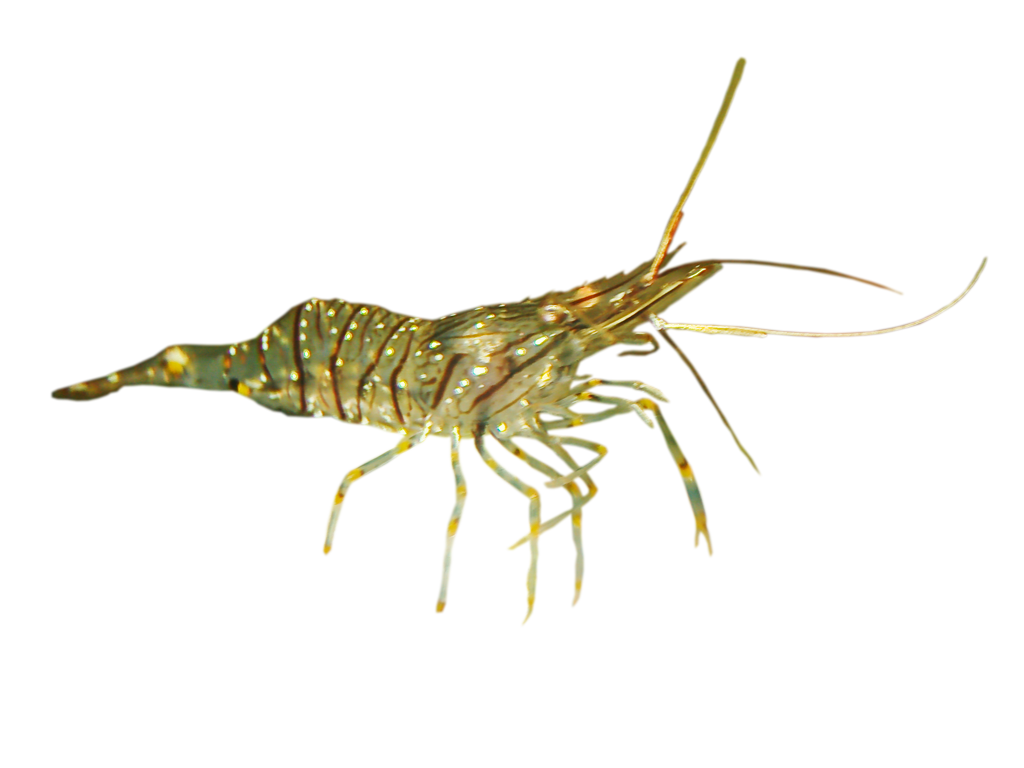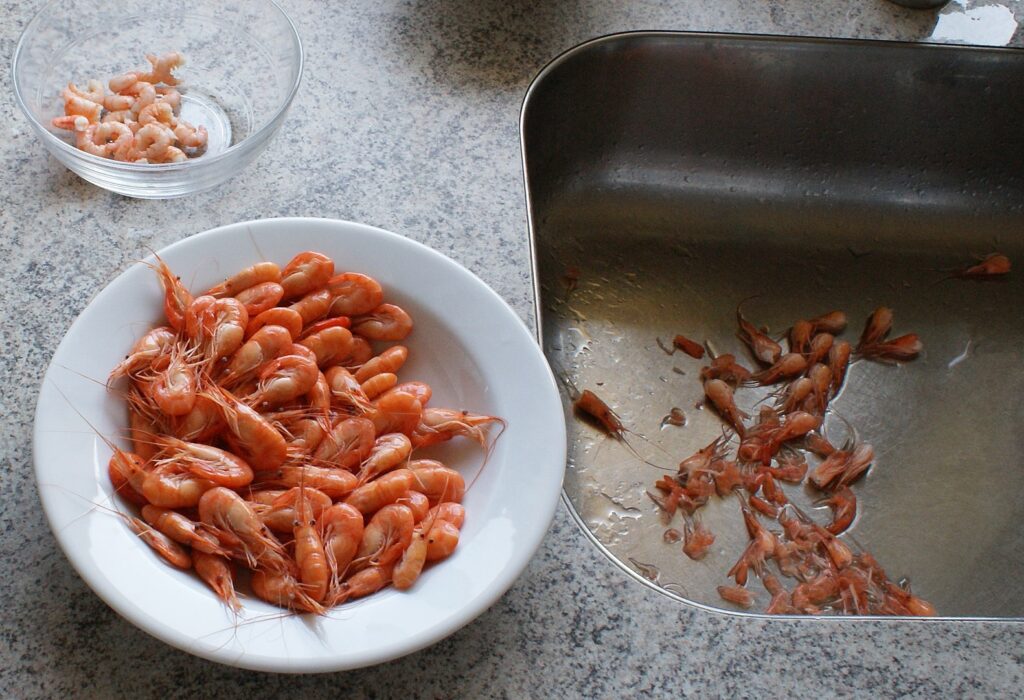Baltic Prawn
Palaemon adspersus

Likes to eat dead skin cells
The Baltic prawn is the largest shrimp in the Baltic Sea. Its body is translucent with brownish stripes, and the legs are striped in blue and yellow. Baltic prawns live in shallow waters in summer, preferably in eelgrass beds, among seaweed and around jetties.
Like other crustaceans, the Baltic prawn has ten legs, divided into five pairs. The front pair are used as hands when the Baltic prawn feeds, and have two scissor-like claws at the end. They are good for both holding and tearing up food. Baltic prawns will eat anything, including the dead skin cells on your feet when you swim! They also eat other dead plant and animal parts, other small crustaceans, and sometimes even each other.

Grow by shedding shell
Baltic prawns reproduce once or twice a year. After mating, the female carries the eggs, which can number up to a couple of thousand, in a clump under her tail. When the eggs hatch, the larvae swim about in the water, until they are big enough to make their way down to the bottom.
To grow, the Baltic prawn needs to replace its shell, in a process called moulting. When the shell becomes too small, it cracks open and the prawn pulls itself out through the opening. The new shell is soft at first, making the prawn extra vulnerable. It hides until the shell has hardened.
Fishing for Baltic prawn is common, particularly in Denmark. There, the Baltic prawn that you eat are called “pillede rejer”.

Photo: Kim-Hansen-CC-BY-SA
Distribution in Sweden

West coast, south coast and the Baltic Sea up to Åland.
White marking = Distribution
Threat based on the Red List

Trade regulations
CITES: Not listed.